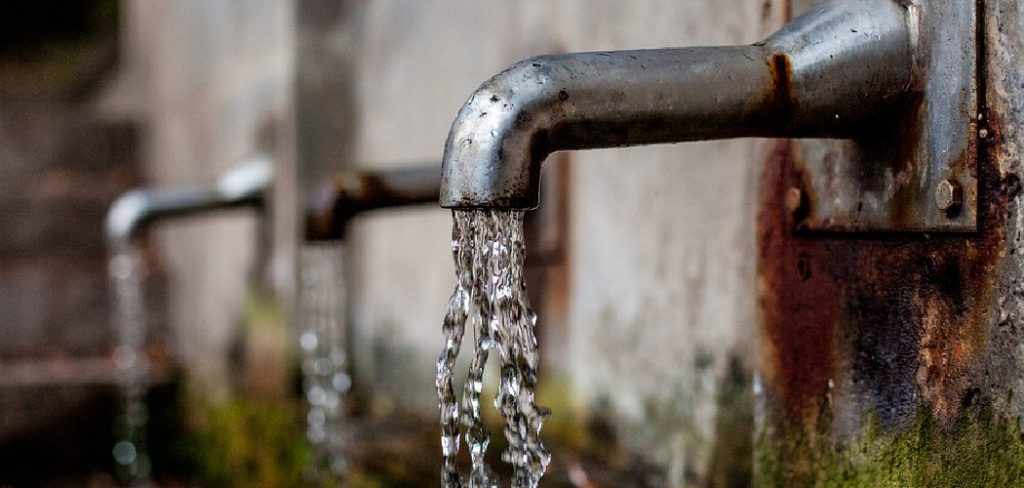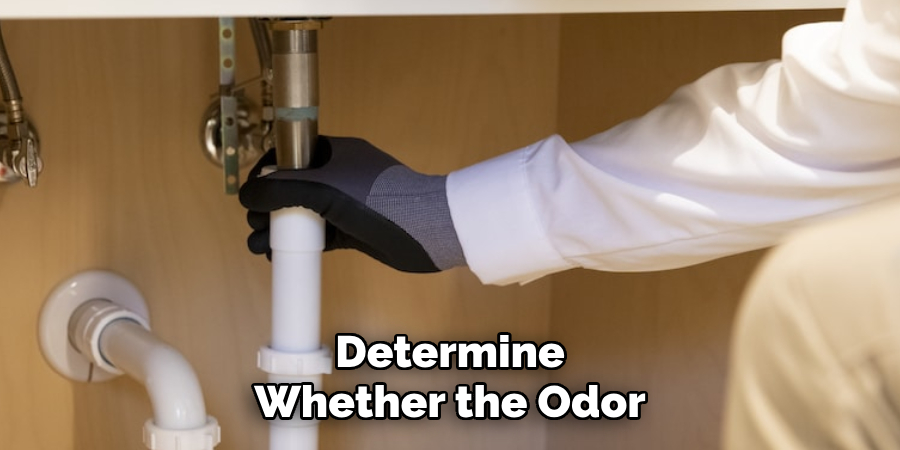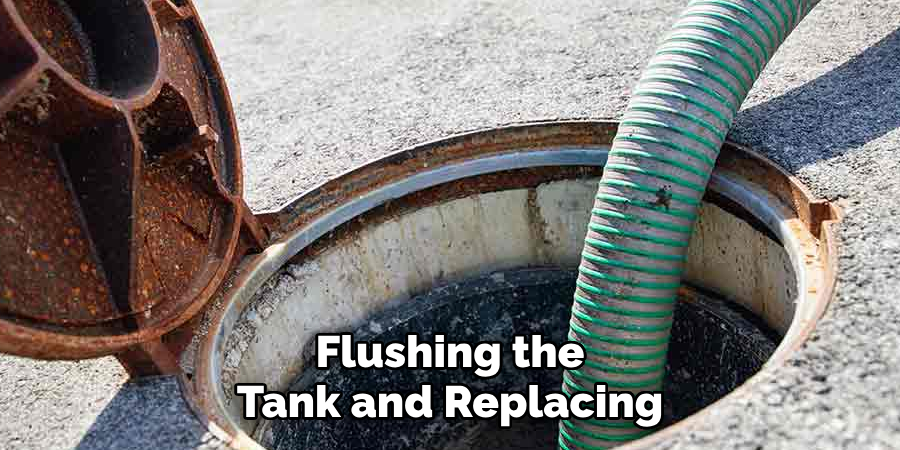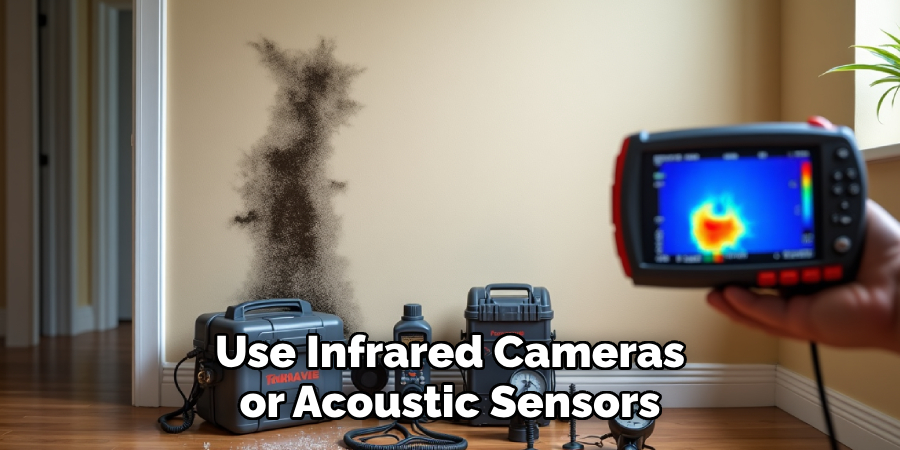Detecting sewage odors in water is an essential step in identifying potential contamination and ensuring water safety. Unpleasant odors can be an early indicator of harmful pollutants or bacterial growth, which may pose risks to both human health and the environment.
By understanding the causes and recognizing the signs of sewage-related smells, individuals and communities can take proactive measures to address the issue promptly and effectively. Understanding how to detect sewage odors in water can help in maintaining it properly and troubleshooting common issues that may arise over time.

Common Causes of Sewage Odor in Water
Sewage odors in water can arise from a variety of sources, often indicating underlying issues that require attention. One common cause is the presence of sulfur bacteria, which thrive in low-oxygen environments and produce hydrogen sulfide gas, giving off a characteristic “rotten egg” smell.
Another potential source is decaying organic matter, such as leaves, plant debris, or waste materials, in water systems or plumbing. Blockages or clogs in drains and sewage lines can also contribute to the release of foul odors, as they cause waste to accumulate and decompose. Additionally, poorly maintained septic tanks or leaks in sewer pipes can allow sewage to seep into nearby water sources, further exacerbating the problem. Identifying and addressing these causes is critical to reducing odor and maintaining water quality.
10 Methods How to Detect Sewage Odors in Water
1. Conduct a Direct Sensory Assessment of the Water Source
The most immediate and instinctual method for detecting sewage odors is using your own sense of smell. When inspecting a faucet, drain, or water sample, take a moment to cautiously sniff the water in a well-ventilated area. A rotten egg, musty, or sulfur-like odor may indicate the presence of hydrogen sulfide gas, which is often produced by anaerobic bacteria in sewage or decaying organic matter.
While subjective, your nose can often identify unusual or foul smells that point toward contamination. It’s important to make this assessment early before any masking cleaning products are used.
2. Perform a “Glass Test” to Localize the Odor

The glass test helps determine whether the odor is coming from the water supply itself or from the surrounding plumbing fixtures. To perform it, run cold tap water for a few minutes, then fill a clean glass with the water and move to another room away from sinks or drains. Smell the water after a minute. If the odor is still present, the issue may lie with the water source, such as a contaminated well or municipal line. If the odor disappears, the problem likely resides in the sink drain, P-trap, or nearby plumbing—often the result of trapped debris or biofilm growth.
3. Test Water for Hydrogen Sulfide Levels
Hydrogen sulfide (H₂S) is a common byproduct of sewage-related bacterial activity and is notorious for producing a strong rotten egg odor. Using a dedicated test kit or digital sensor, you can measure H₂S levels in your water to confirm its presence. Kits often include reactive strips or solutions that change color when hydrogen sulfide is detected. High H₂S levels in combination with a foul odor suggest sewage-related contamination, especially in well water systems, septic tanks, or aging pipelines where bacteria thrive.
4. Examine Drains and P-Traps for Odor Buildup
Drains, especially those infrequently used, can dry out and lose the water seal in their P-traps, allowing sewer gases to rise back into the home. Run water through all drains regularly to maintain the seal, and inspect for odor sources by sniffing near the drain opening. If the smell intensifies here, it’s a good indicator that the odor is not from the water but from the sewer gas escaping the plumbing system. Pouring water down dry drains or using enzymatic cleaners can often resolve these issues.
5. Sample Water from Multiple Fixtures for Comparison
To isolate the source of a sewage odor in your water, compare samples from different locations—kitchen sink, bathroom sink, shower, and outdoor spigots. If the smell is consistent across all fixtures, the issue likely lies with the incoming water supply. However, if only one location emits the odor, the problem may be confined to a localized pipe, fixture, or trap. This comparative approach is particularly helpful in larger buildings where plumbing systems branch off in various directions.
6. Analyze Water for Coliform and Sulfur Bacteria
Laboratory testing for coliform bacteria, particularly E. coli, and sulfur bacteria is a definitive way to determine if sewage is contaminating your water. Collect samples in sterile containers and send them to a certified lab. Coliforms suggest fecal contamination, while sulfur bacteria are known to cause foul smells. These bacteria typically thrive in anaerobic conditions such as in wells, stagnant water, or failing septic systems. Confirming their presence not only validates the sewage odor but also identifies the microbial cause behind it.
7. Inspect Water Heaters for Bacterial Growth

Water heaters, especially those left idle or set at lower temperatures, can harbor sulfur bacteria. These organisms feed on magnesium or aluminum in the anode rod and produce hydrogen sulfide gas, which escapes when hot water is used. To test this, compare the smell of hot water to that of cold water from the same tap. If only the hot water smells foul, the issue likely lies in the heater. Flushing the tank and replacing the anode rod with one made of zinc can often eliminate the odor source.
8. Use a Dye Test to Trace Septic or Sewer Leaks
A dye test can reveal whether sewage odors are originating from a compromised septic system or broken sewer line. Non-toxic fluorescent dye is flushed through toilets or sinks, and water sources downstream—such as yard drains, sumps, or nearby wells—are monitored for discoloration. The appearance of dye in a water sample indicates sewage backflow or leakage, often accompanied by unpleasant smells. This method is especially effective in rural homes or properties with older or uninspected septic systems.
9. Investigate the Ventilation and Plumbing Vents
Clogged or blocked plumbing vents can cause sewer gases to back up into the home, mimicking water contamination. Inspect your roof vents and air admittance valves (AAVs) for obstructions like leaves, nests, or ice. Poorly vented systems may create negative pressure, drawing foul odors into your living space during water usage. Though not always directly affecting the water itself, improper venting can lead to confusing odors that seem to come from the water. Restoring proper airflow can quickly clear up this type of issue.
10. Call a Professional for Smoke Testing and Leak Detection
When all else fails or when the odor persists and the source is unclear, calling in a professional plumber or environmental inspector is wise. They can perform smoke testing by introducing non-toxic smoke into the sewer lines to reveal hidden leaks, breaks, or misrouted drains. This test shows where gases (and odors) escape, even if the water appears clean. Professionals may also use infrared cameras or acoustic sensors to locate concealed sewer line issues. This comprehensive inspection can definitively link sewage odors to plumbing defects or water contamination.

Things to Consider When Addressing Sewer Odors
Identify the Source
Pinpointing the origin of the odor is crucial before attempting any fixes. Determine whether the smell comes from a specific drain, appliance, or area of your home to narrow down the potential cause.
Evaluate Ventilation
Ensure that your plumbing system has adequate venting. Poorly vented systems can trap sewer gases, leading to unpleasant odors inside your home.
Inspect for Blockages
Blocked or clogged drains can cause odors to back up into the living space. Regularly check for and clear any debris in sinks, tubs, and other drains.
Consider Professional Assistance
Some issues may require expertise beyond DIY efforts. If odors persist despite your interventions, contacting a licensed plumber or inspector ensures more thorough diagnostics and solutions.
Address Maintenance Regularly
Preventative maintenance, such as cleaning drains and ensuring traps are filled with water, can help in avoiding odors and potential damages in the long run.
Common Mistakes to Avoid
When addressing drain odors, it’s essential to avoid common missteps that could worsen the situation or fail to resolve the problem. One common mistake is using excessive chemical drain cleaners, which can damage pipes over time and harm the environment. Ignoring small odors or dismissing them as insignificant can also lead to larger issues if underlying causes, like clogs or leaks, go unaddressed.
Additionally, attempting invasive repairs without proper tools or expertise can lead to further damage and higher repair costs. Always ensure you understand the problem before acting and know when it’s time to call a professional.

Conclusion
Detecting sewage odors in water is more than a matter of convenience—it’s a vital step in protecting your health and ensuring the integrity of your water supply. Whether through simple sensory methods or advanced laboratory testing, these ten approaches offer a multi-layered toolkit to diagnose and understand the source of foul-smelling water. From hydrogen sulfide detection to comparative fixture sampling and dye tracing, each method plays a role in forming a complete picture. So, there you have it – a quick and easy guide on how to detect sewage odors in water.

